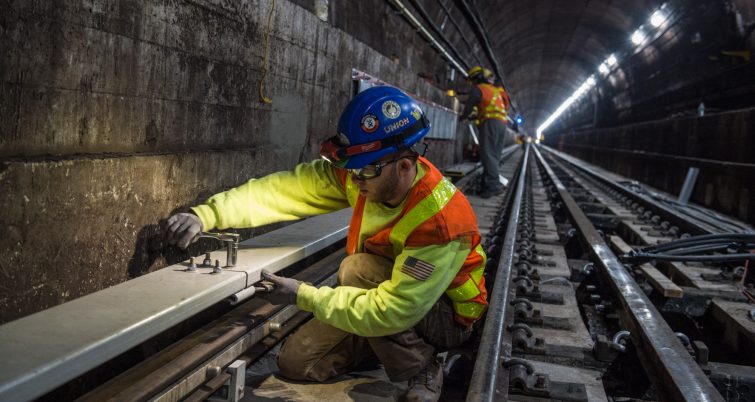Improving the safety and efficiency of railroad operations with automation-assisted technology
Written by David C. Lester, Editor-in-Chief
Maintaining efficient railroad operations while ensuring overall safety is an essential part of the Federal Railroad Administration’s (FRA) mission. Automation-aided technologies have the potential to save lives and improve safety while improving efficiency and effectiveness of track maintenance and inspection practices.
FRA is working to understand how these innovative technologies will impact the safety and effectiveness of routine track inspections and maintenance procedures across the U.S.
FRA asked a team of U.S. Department of Transportation Volpe National Transportation Systems Center (U.S. DOT Volpe Center) human factors experts to research visual and automation-aided rail inspection processes. The U.S. DOT Volpe Center’s objective was to identify factors that could lead to hazards during both types of inspections and to provide recommendations to mitigate those factors.
The U.S. DOT Volpe Center team focused on railroad inspection systems that employ automated track geometry technology, a widely used form of automation-aided track inspection used in freight and passenger rail.
The team studied three sociotechnical systems, where “sociotechnical system” refers to a combination of people, technologies, actions, and feedback that comprise the inspection process. To reflect current inspection practices and allow for the analysis of human-automation interactions, all three sociotechnical systems include a visual inspection component.
The three sociotechnical systems included in the U.S. DOT Volpe Center analysis were:
- Visual inspection sociotechnical system: Only visual inspection is used to find track issues.
- Track geometry measurement systems (TGMS) and visual inspection sociotechnical system: Both visual inspection and TGMS are used to find track issues.
- Autonomous track geometry measurement systems (aTGMS) and visual inspection sociotechnical system: Both visual inspection and aTGMS are used to find track issues.
The U.S. DOT Volpe Center analyzed each of these systems using a hazard analysis approach designed to examine complex sociotechnical systems where human and technological components impact safety.

The U.S. DOT Volpe Center used existing literature, information from multiple site visits, as well as additional discussions with subject matter expects to identify and document how the track inspection process works, including the role of the inspector, the role of automation, and the types of human-technology interaction required.
The team also sought to understand what railroads do once a rail defect is found and how the inspection process fits into the broader track lifecycle, which includes inspection, maintenance, and operations.
The U.S. DOT Volpe Center team created a functional model of each sociotechnical system, which was used as the basis for the hazard analysis.
During the analysis, the team identified how each action in the inspection process could lead to undesirable conditions, or hazards. The team then developed a comprehensive set of scenarios describing how combinations of factors could lead to undesirable events or accidents.
By identifying ways to address contributing factors from these scenarios, the U.S. DOT Volpe Center developed recommendations railroads can use to assess and strengthen their current inspection processes and safety measures.
The team’s recommendations address potential risks at various stages of the track inspection process (i.e., detecting, assessing, and fixing defects) as well as different levels of the sociotechnical system (e.g., task, individual and team, organizational, tools and technology, physical environment, and external factors).
Major themes that emerged from these recommendations include the need for strong user-centered design when incorporating new technologies, the value of hands-on training, the importance of communication and coordination, and a need to manage the impact of production and resource pressures on inspection and maintenance activities.
Railroads may use these recommendations to address risks associated with visual inspection and track geometry measurement systems. Additionally, the recommendations can be used when assessing future inspection technologies.
Celebrating 50 years of advancing transportation innovation for the public good, the U.S. DOT Volpe Center’s mission is to help the transportation community navigate its most challenging problems.





